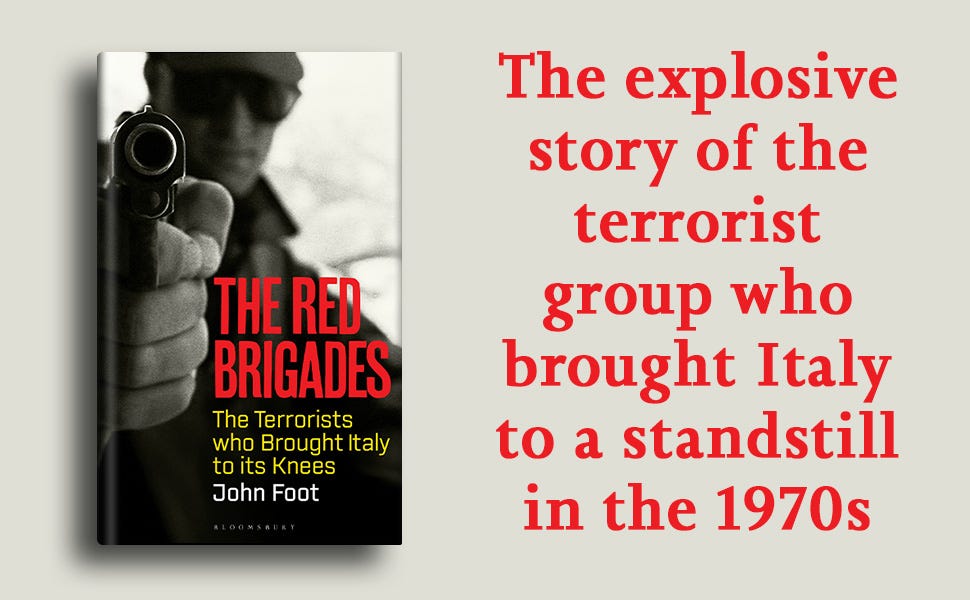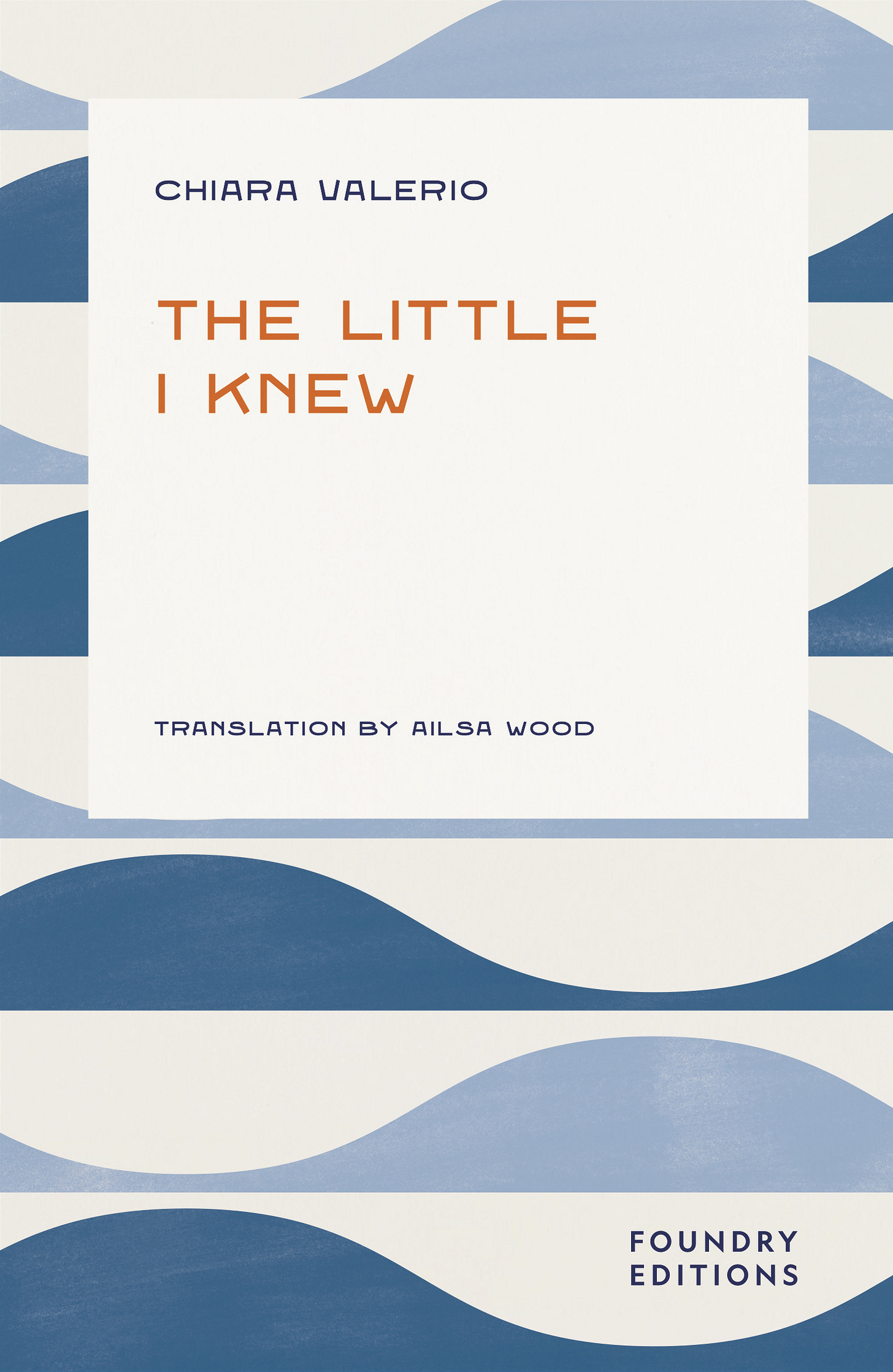At 15.00 on Monday afternoon, as the referendum polls closed, it was already clear we were facing a damp squib. The turnout in this much-publicised plebiscite was one of the lowest in the history of the Republic. Just 30% of Italians turned up, well below the level required to reach quorum. The question is why. And here the fact that Meloni and her government told people to abstain is simply not enough. Personally, I have a few takeaways. The first, which I anticipated last week, was that this stand-off was too ideological. Rightly or wrongly, many people perceived the vote as being more about internal reckoning between PD factions and the CGIL unions than real issues and real people. The messaging (i.e. that anyone who voted would be taking part in a manichaean struggle against Meloni’s government), only made matters worse by ensuring that conservative voters who supported some of the issues were actively disincentivised from showing up. Second, the referendum itself was too abstract. The decision to lump citizenship issues together with highly technical labour reforms was always questionable. There’s little doubt that a simpler, more focused frame would have been more effective in galvanizing the broader electorate. But let’s not forget the bigger picture. I’ve been distraught to see so many commentators throwing so much hatred at so many good people who tried to get this thing off the ground. Despite the political leaders’ weak strategy, millions of Italians turned up to try to defy an epochal, global democratic crisis. So enough of the “italia paese di merda” talk! Yes, this was a huge disappointment, but it was always going to be an uphill struggle and, as the figures below show, there are actually one or two silver linings.
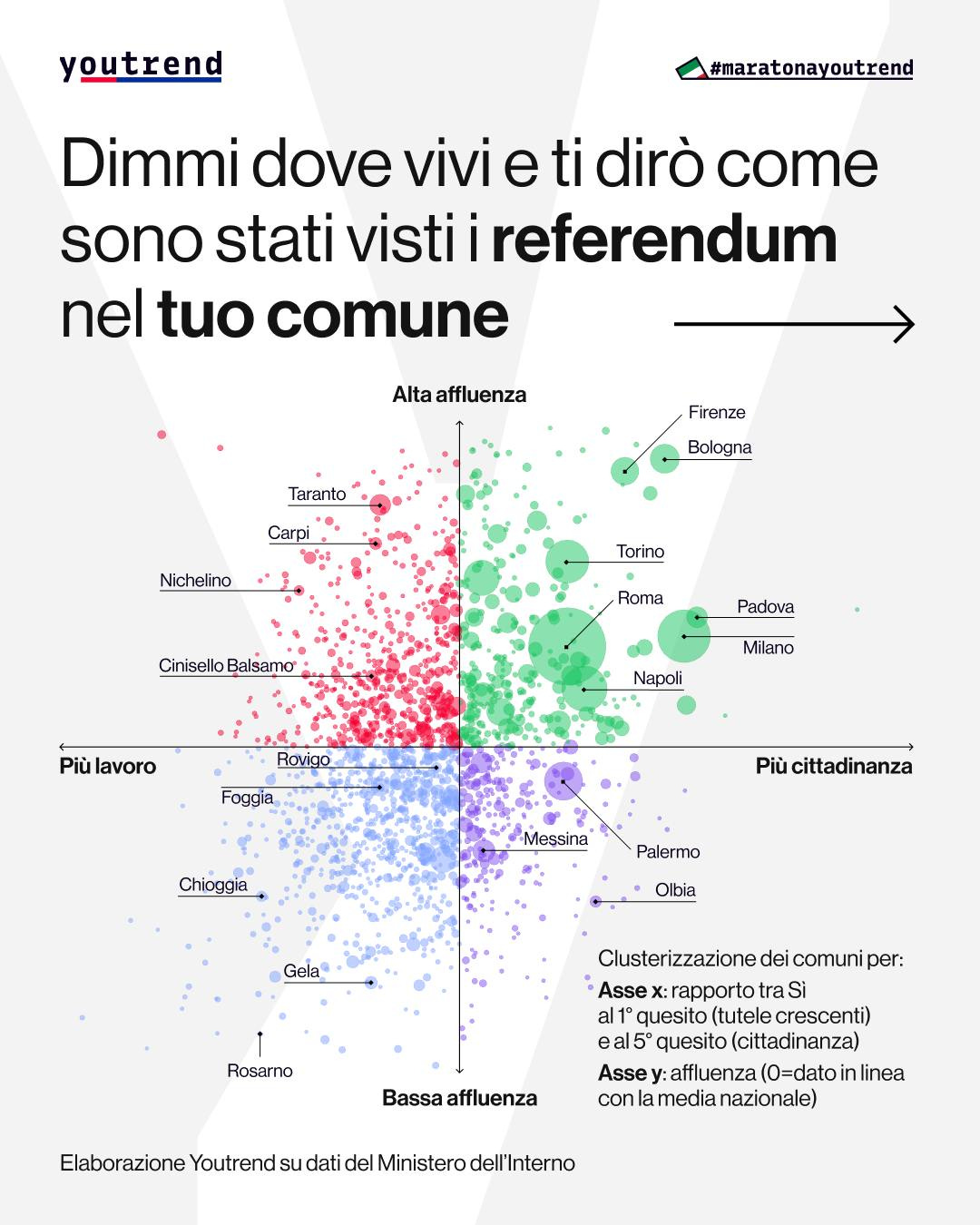
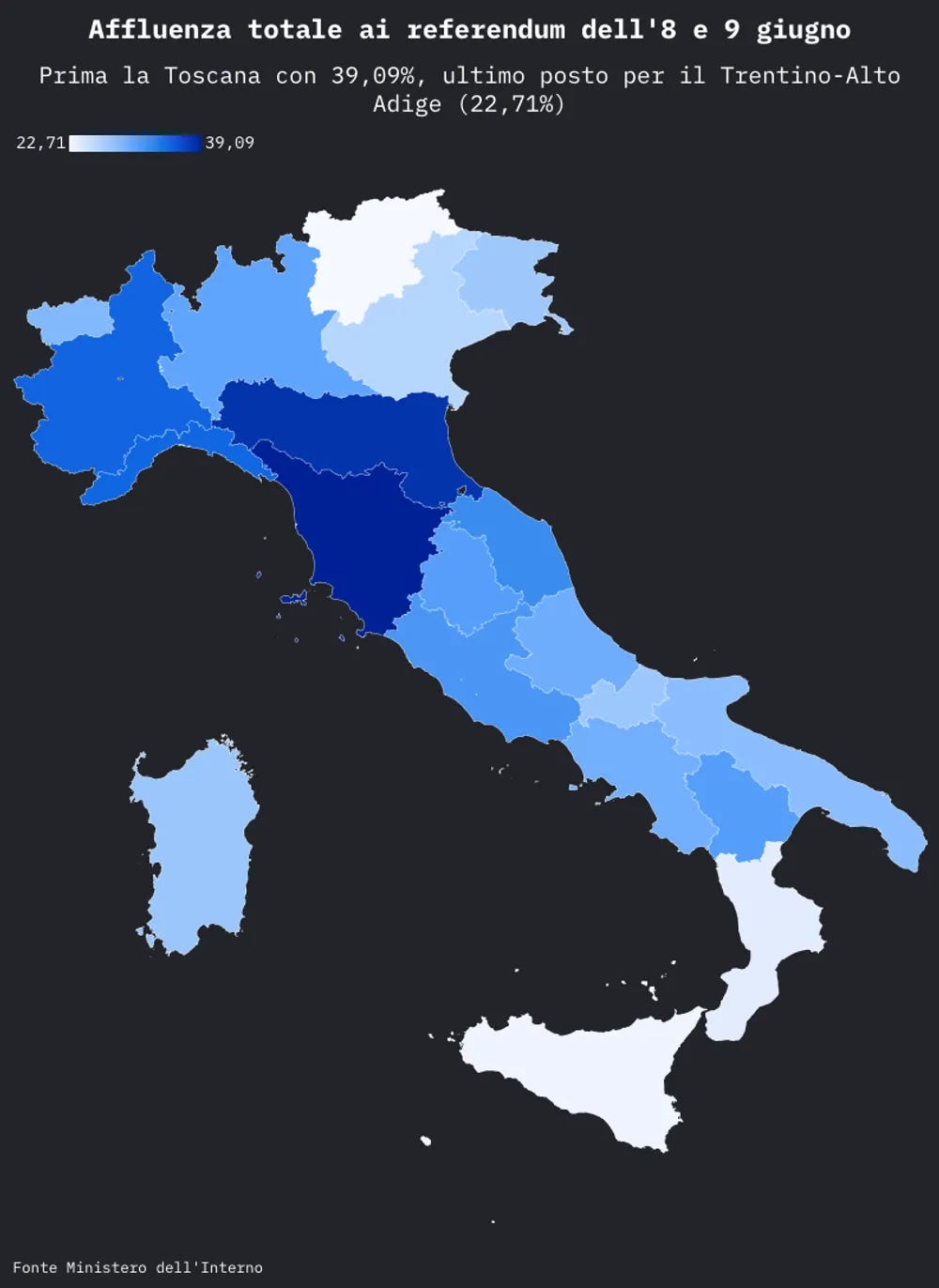
Time for some hard data then. I’ve been working through the numbers since Monday and I want to flag a few interesting trends. Over 15 million Italians did vote; that’s roughly 3 million more people than cast a ballot for the centre and far right in the 2022 national elections to elect Meloni to office. This in itself is something! Turnout, unsurprisingly, was highest in the PD heartlands of Tuscany and Emilia Romagna, followed by the big cities. In the south, where the Five Star Movement was leading the campaigning, the results were particularly poor. In terms of demographics: more middle class and university educated people seem to have voted. More women than men voted. A huge number of foreign registered voters also participated (more, incidentally, than in many Italian regions). This is the (broad) base that mobilized for the referendum, and while it wasn’t enough to ensure quorum, it does show the potential for a campo largo to begin mobilizing ahead of future elections. If there’s one question that’s driving me mad personally it’s therefore this: why are progressive campaigners still putting so little (actually zero) emphasis on Southern Italy? Why, after decades of low turnout in Sicily, Calabria, Campania and so on, is there so little ground game there? There are many nuances to this debate, but one fact is undeniable: if progressives were to start investing meaningful time, effort and money into the mezzogiorno, the above map has the potential to look very different indeed.
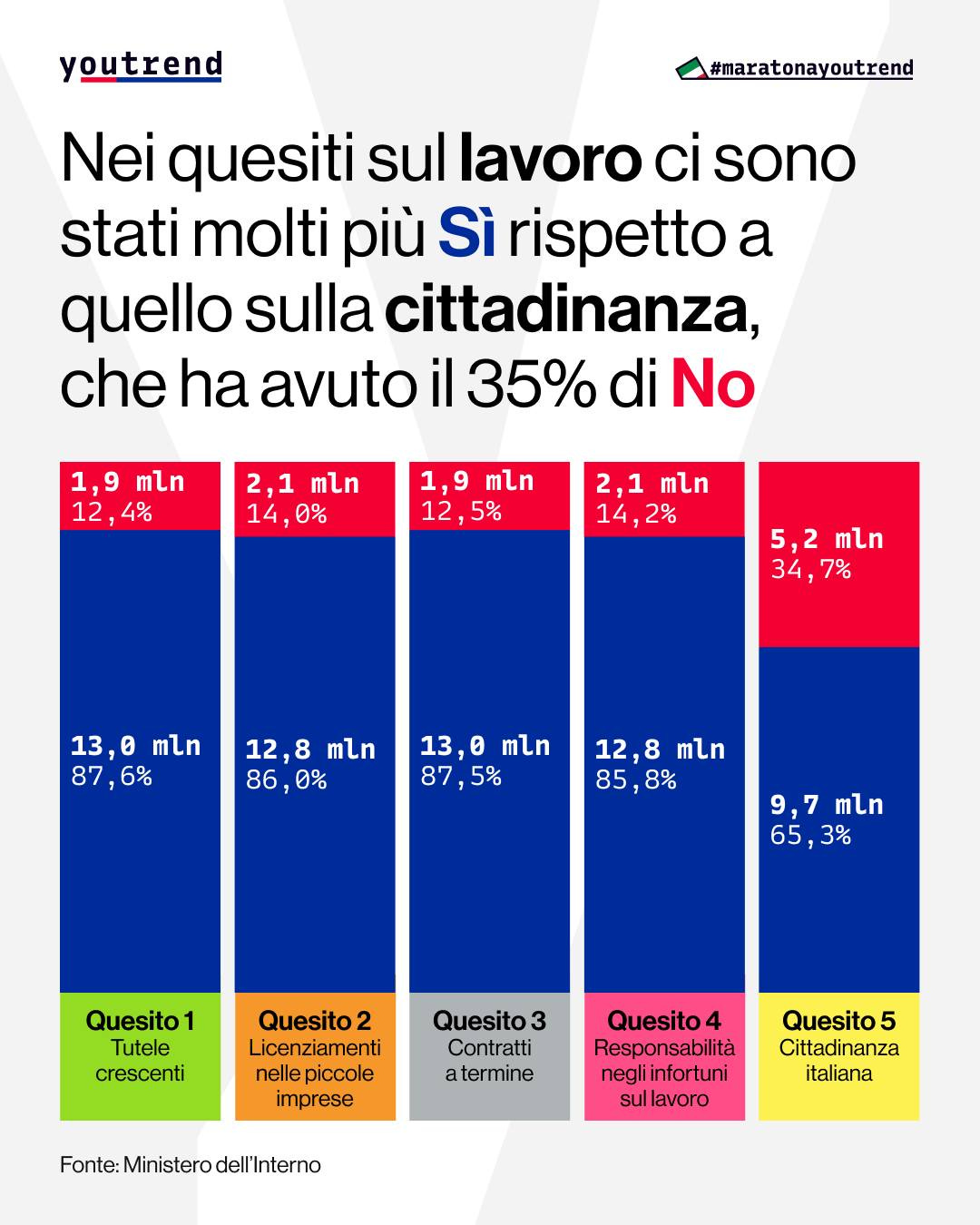
Next up some history for you (if only to put some of our current political woes in perspective). John Foot, Professor of Modern Italian History at the University of Bristol has got a new book out about the 1970s and 80s and it sounds like a must read to me. The Red Brigades: The Terrorists who Brought Italy to its Knees tells the story of the far-left political organization which conducted numerous bombings in the latter half of the 20th Century and which is probably best known for kidnapping and assassinating the former prime minister Aldo Moro in 1978. There are so many books and films and TV shows about these events, and I’m sure many here have heard the story enough times. This book, though, aims to make use of newly declassified sources, to provide a broader look at the BR on its own terms; not only as the group behind the Moro affair, but as a vast organization that, for mysterious reasons, for over twenty years, was able to operate a bloody campaign of “murder, kidnap, kneecapping and intimidation that paralysed Italy's justice system and reshaped the political landscape.” The book is released on 19 June and you can order a copy here if you’re interested.
Arts & Culture: Cinematic Grooves
If you don’t know them, the small press Foundry Editions is a remarkable publishing outfit which has been putting great books out into the world against considerable odds since 2023. Their focus is on the Mediterranean region as a whole, and the few titles they support aim to give visibility to lesser-known authors in the ENG world, and to build a transnational, cross border literary space. A noble aim if ever there was one! This month, Foundry released a new book by Chiara Valerio called The Little I Knew (trans. Ailsa Wood) which was first released in Italian in 2024 with the title Chi dice e chi tace and which was nominated for the Strega Prize. The novel, which I’m sorry to say I’ve not yet read, is set in Scauri, a small town between Rome and Naples, and it follows the life of the small community in the wake of the death of a woman named Vittoria who arrived, and departed, under strange circumstances. The core plot follows Lea, the town investigator, as she searches for answers, but the book is most important, apparently, for its compelling snapshot of the realities of life in provincial Italy today. I can’t judge the whole, but I really enjoyed the atmospheric preview (which you can read here) and I hope many of you will check it out if only in the spirit of supporting indie publishing.
If you didn’t get it, I’ve been feeling pretty miffed about the referendum result this week... Thank goodness then that there’s still some space for joy on the music front. This week the Milanese band Calibro 35 released their 12th studio album Exploration, and it’s just the thing for lounging around to — and recharging — during these torrid, sleepy June afternoons. The album’s 11 tracks are a mix of instrumental jazz, funk and psychedelia, inspired heavily by old movie soundtracks from the 70s. There are some serious grooves here. Poly-instrumentalists Massimo Martellotta, Enrico Gabrielli, Fabio Rondanini, Luca Cavina and Tommaso Colliva all excel on the record and the group’s versions of classics like ‘Nautilus’ and ‘Pied de Poule’ are perfectly executed. There’s also a terrific bass heavy cover of Herbie Hancock’s ‘Chameleon’ which, personally, is just what I needed at the end of this tiring week. So grazie ragazzi. And if you’re in need of a dose of sonic therapy check out the full album here.
Recipe of the Week: Chilled melon and olive oil soup with 'nduja toast and oregano
The thermometer here in Florence is due to hit 38 degrees celcius over the weekend and I’ve got to admit my brain is already turning to mush. It’s the season, then, for cold soups. While cold soups are not strictly speaking traditional in Italy it’s not uncommon to find variations of gazpacho or salmorejo or even ajo blanco in trattorias these days; anzi these dishes are becoming more and more a part of contemporary Italian summer cuisine. And I, for one, am there for it. This week, I want to share a recipe by Steve Groves for a chilled melon and olive oil soup which he suggests serving with a side of 'nduja toast and topped with oregano. This is a delicious dish for a hot day. It’s cheap and fast to make, fresh, balanced, creative, relatively healthy and basically no cook. As far as assemblages go, this one ticks all the right boxes. It’s fine for a quick lunch but elegant enough for a meal with friends or to serve as a light dinner party entree. So here’s the link.
I’m Jamie Mackay, a UK-born, Italy-based writer, working at the interfaces of journalism, criticism, poetry, fiction, philosophy, travelogue and cultural-history. I set up ‘The Week in Italy’ to make a space to share a regular overview of the debates and dilemmas, innovations and crises that sometimes pass under the radar of our overcrowded news feeds, to explore politics, current affairs, books, arts and food. If you’re a regular reader, and you enjoy these updates, I hope you’ll consider becoming a supporter for EUR 5.00 per month. I like to think of it as a weekly catch-up chat over an espresso. Alternatively, if you’d like to send a one-off something, you can do so via PayPal using this link. Grazie!



